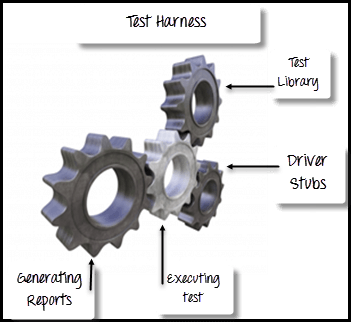A test harness, also known as a test framework or testing framework, is a software tool or infrastructure that provides a structured and automated environment for designing, executing, and managing software tests. It facilitates the process of testing software components, modules, or systems by providing various utilities, libraries, and guidelines to streamline the testing process and improve overall software quality.
A test harness typically offers the following functionalities:

Test Case Management: It allows you to define, organize, and manage test cases. Test cases are individual scenarios or conditions that are designed to test specific aspects of the software.
Test Execution: The framework provides a way to execute tests automatically and systematically, which helps in detecting defects and ensuring that the software behaves as expected.
Test Result Reporting: It generates detailed reports about the test execution outcomes, making it easier to identify which tests passed, failed, or encountered errors.
Test Data Management: Some test frameworks provide mechanisms to manage and generate test data, which is used to simulate various scenarios during testing.
Setup and Teardown: A good test harness allows you to set up initial conditions before running tests and perform cleanup actions after the tests are complete. This ensures that tests are run in a controlled environment.
Mocking and Stubbing: In cases where certain components or dependencies are not yet available or are difficult to simulate, a test harness may offer mechanisms to create mock objects or stubs to emulate their behavior.
Test Automation: Test harnesses are designed to automate the execution of tests, reducing the need for manual testing and allowing for quicker feedback on the software's quality.
Integration with Continuous Integration (CI) Systems: Many test frameworks integrate with CI systems, allowing tests to be automatically run whenever code changes are made to a repository. This helps maintain software quality as the codebase evolves.
Popular test harnesses exist for various programming languages and software development platforms. Some well-known examples include:
These frameworks help developers implement and execute tests efficiently, leading to improved code quality, faster development cycles, and more reliable software releases.
Thank You